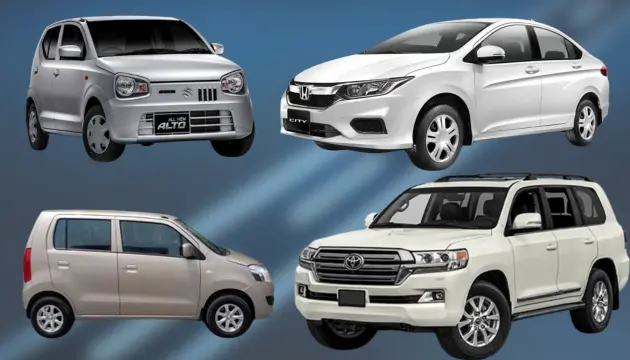ISLAMABAD: The government is expected to make major changes in the upcoming federal budget 2025-26, including higher taxes on big cars and relaxed rules for used car imports.
The Federal Board of Revenue (FBR) has proposed increasing withholding tax on vehicles with engine capacity above 1300cc to collect more revenue.
At the same time, media reports say the government may allow the import of used vehicles up to five years old. This move is aimed at giving buyers more choices and increasing competition in the auto market.
At present, the withholding tax is set at 2% for vehicles between 1300cc and 1600cc, 3% for 1601cc to 1800cc, 5% for 1801cc to 2000cc, 7% for 2001cc to 2500cc, 9% for 2501cc to 3000cc, and 12% for vehicles exceeding 3000cc. The FBR intends to increase these rates to boost revenue collection.
ALSO READ >>> Kuwait lifts ban on Pakistani visas – all categories reopened
This proposal comes after the shift to a value-based tax system introduced last year, which calculates tax based on the price of the vehicle instead of a fixed amount. it should be remembered that In 2024, the FBR collected over Rs4 billion in withholding tax from vehicles and expects higher revenue in the new financial year with the increased rates.
Used Car Import Policy Under Review
Additionally, sources said that FBR is reviewing a proposal to allow the import of used vehicles up to five years old, aiming to enhance competition in the auto sector.
Sources indicate that the proposal seeks to extend the age limit for used vehicle imports from three years to five years across all categories. Currently, the government allows imports of used cars up to three years old and SUVs up to five years under special schemes. The new policy may bring a uniform five-year age limit for all vehicle types.
In the 2024-25 budget, the government had imposed a 15% regulatory duty on imported used cars above 1300cc. Authorities are now examining the option to gradually reduce regulatory duties and lower tariffs on Completely Built-Up (CBU) vehicles to below 10%. The broader goal is to bring overall auto sector tariffs down to single digits within the next five years.














